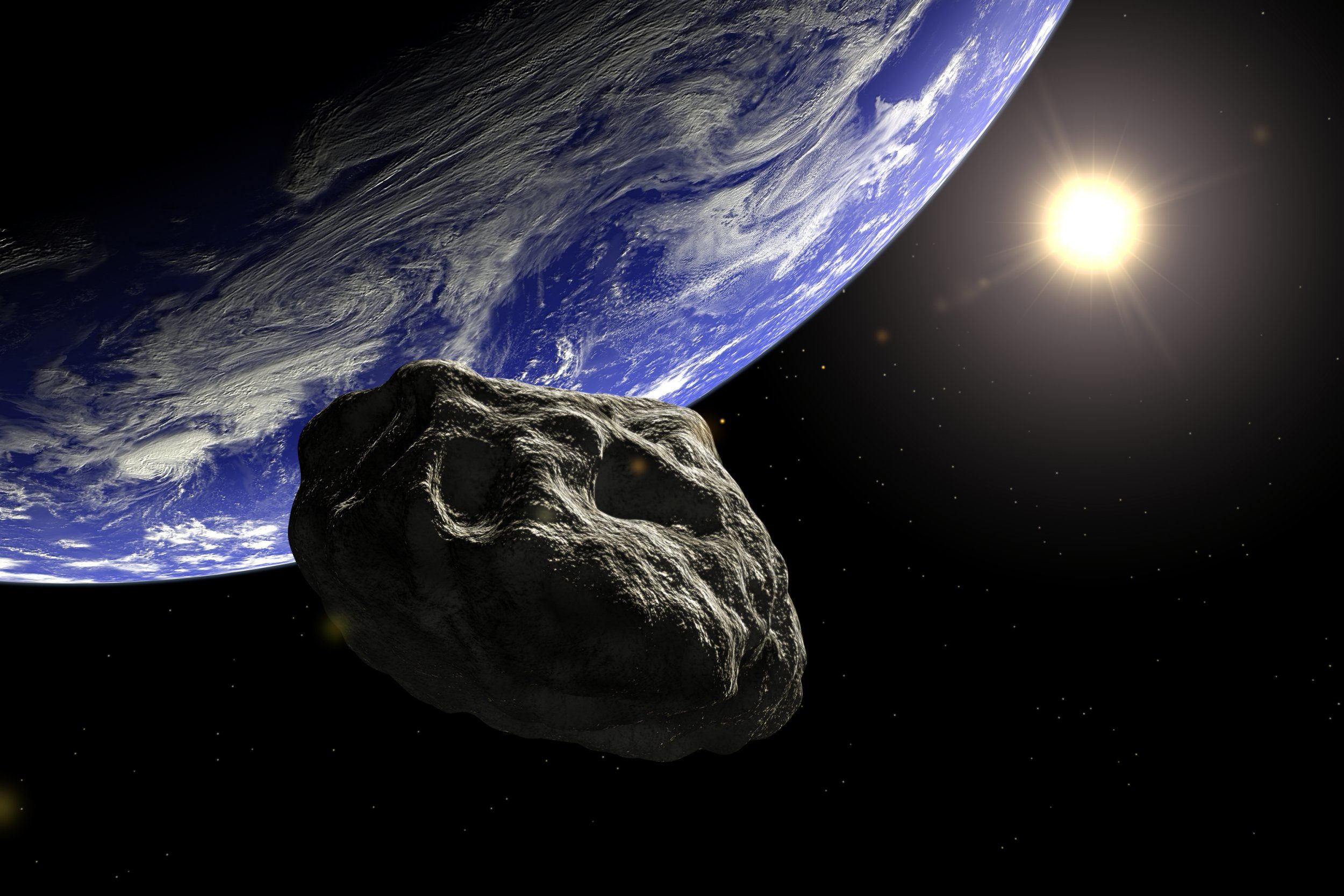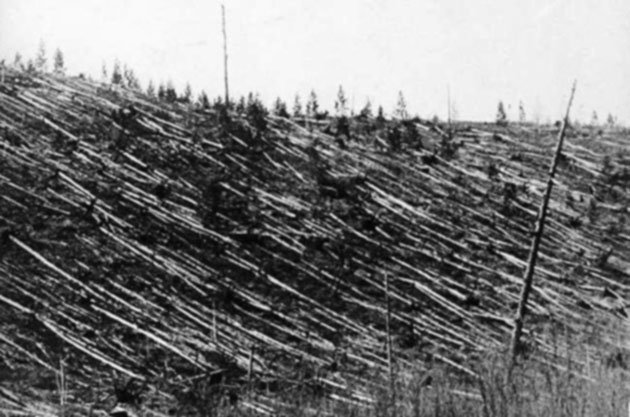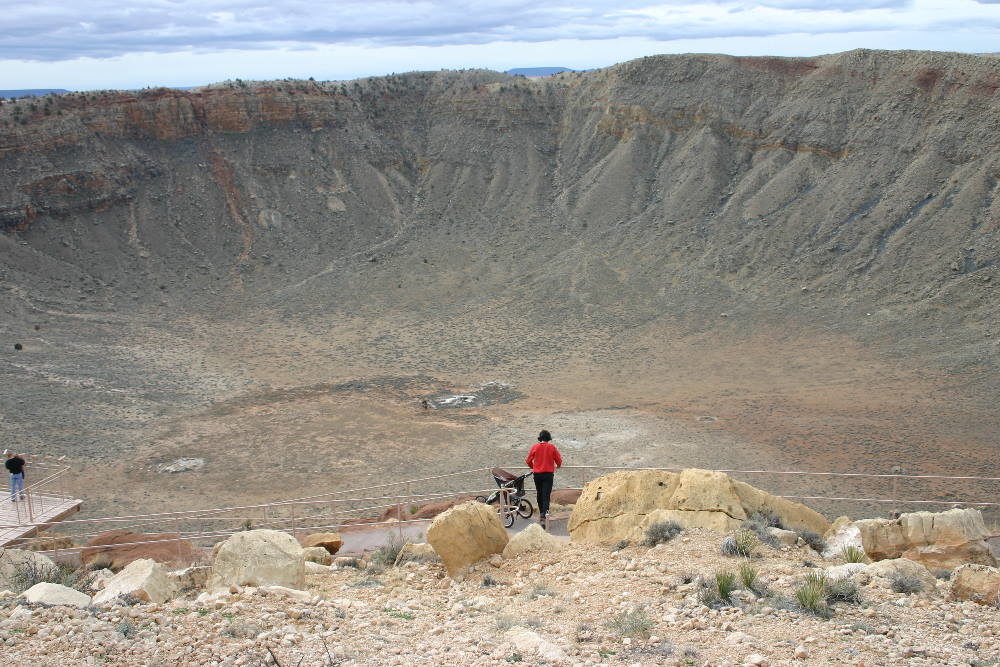Now we'd like to add 'mini-moons' to the list of heavenly bodies we should be worried about. Scientists have claimed our planet was recently hit by one of these mysterious rocks, which exploded in a gigantic fireball.
A mini-moon is an object which becomes entangled in Earth's orbit as it's zooming through space. It will either whirl around the planet harmlessly forever, zoom off back off on its journey through the solar system or, in the worst case, smash into our planet.
'Objects gravitationally captured by the Earth-Moon system are commonly called temporarily captured orbiters, natural Earth satellites, or minimoons,' scientists wrote in a new study published in The Astromomical Journal.
'TCOs are a crucially important subpopulation of near-Earth objects (NEOs) to understand because they are the easiest targets for future sample-return, redirection, or asteroid mining missions.
'Only one TCO has ever been observed telescopically, 2006 RH 120, and it orbited Earth for about 11 months.'
However, it's believed that an 'extremely slow fireball' which exploded over South Australia may have been a mini-moon. It was picked up by six different detectors when it went kaboom in August 2016. No-one was hurt in the incident, but it shows that the movement of objects through the region of space close to Earth is highly unpredictable.
If the rock had been larger, it could have done some major damage.
It's very difficult to guess what's going to happen to an object when it encounters Earth's gravity because its movements are 'chaotic in nature and predicting its pre-impact trajectory is very difficult'.
What this means is that if we saw a big asteroid in our planet's orbit, we wouldn't necessarily be able to say where and when it was going to hit Earth - or even if it was going to simply zoom around humanity's homeworld and then travel off into space.
This year, Nasa has discovered two asteroids which could be on a collision course with our planet. The space agency keeps a database called Sentry that contains details of all the space rocks with a chance of smashing into Earth. This list is updated every time a new object that could hit humanity's homeworld is discovered.
In the past six months alone, two separate rocks have been discovered which could crash into us.
The first is called 2019 ND7 and was observed in July. This beast is almost 200 metres wide, which is large enough to wipe out an entire city. It could be bigger than a meteor which detonated over Tunguska, Russia, in 1908 and flattened trees over an area of 770 square miles.
The 'Tunguska event' caused an explosion of 15-megatons - which is roughly 1,000 times greater than that of the atomic bomb dropped on Hiroshima, Japan.
The rock which caused this mighty kaboom was between 60 and 1,000 metres wide, although most estimates indicate it was at the smaller size of this range.
Describing this incident, Nasa wrote: 'Although a meteor the size of the Tunguska can level a city, metropolitan areas take up such a small fraction of the Earth's surface that a direct impact on one is relatively unlikely.
Comment: Tell that to the population of Chelyabinsk in southern Russia, scene in 2013 of the largest 'direct hit' - albeit in the sky overhead - since the Tunguska event in 1908.
'More likely is an impact in the water near a city that creates a dangerous tsunami.'
Luckily, there is only a very small chance of the asteroid hitting Earth. Nasa has calculated the risk at 1 in 310,000, meaning there's a 99.99968% chance the asteroid will miss the Earth.
Comment: Right, but the 2016 one in Australia didn't miss. Nor did the hundreds of other sizeable impacts in recent years...
The second asteroid is called 2019 WG2 and was observed this month. It's much smaller and stretches to just 35 metres wide.
However, this could still cause a huge explosion. It's estimated that a crater outside Winslow, Arizona, was blasted into the Earth 50,000 years ago by a similarly-sized object which exploded with 10 megatons of energy.
However, we're glad to report that the chance of it hitting is us is quite small. There's a 1 in 4000 risks of the object ploughing into our planet. We also have a grace period, because neither is at risk of colliding into Earth until the end of the century.
There's a chance of 2019 ND7 crashing into Earth between 2097-2117 on 20 different occasions, while 2019 WG2 could hit between 2098 and 2119 at 56 different times.
On its Sentry page, Nasa said: 'One must bear in mind that an Earth collision by a sizable near-Earth asteroid is a very low probability event.'






Comment: God, MSM reporting on space rocks is INFURIATINGLY stupid... Anyway, the astronomers who published this paper have touched on something we've been wondering about: whether some (or most) of the 'slow-moving meteors' may in fact be objects that had been previously captured by Earth's gravity.
The same phenomenon is apparently occurring with respect to other planets in our solar system, whose numbers of 'moons' grow by the year. Those new 'moons' are typically accounted for by 'better observation technology', but clearly the actual numbers of 'moons' are growing...